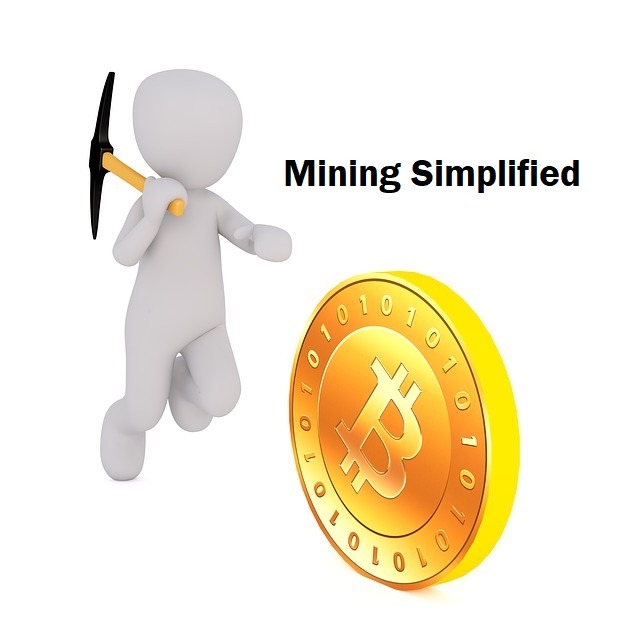Staking Crypto Meaning Explained! How You Can You Earn With Staking?
So, you’ve probably heard about staking in the crypto world, right? It’s this thing where you can earn rewards just by holding onto your crypto. Sounds simple enough, but there’s a lot more to it. Staking is all about helping to keep the blockchain running smoothly, and it can be a great way to earn some passive income. But, like anything in the crypto space, it’s not without its risks. Let’s break down what staking really means and how you can get involved.
Key Takeaways
- Staking involves holding crypto to support blockchain operations and earn rewards.
- It’s different from mining as it uses less energy and doesn’t require expensive hardware.
- Validators play a crucial role in verifying transactions and maintaining the network.
- Staking can provide passive income but comes with risks like price volatility and lockup periods.
- Choosing the right platform and understanding the terms is essential for successful staking.
Understanding Staking Crypto Meaning
What Is Staking in Cryptocurrency?
Staking in cryptocurrency is like putting your money in a savings account but with the potential for higher returns. When you stake your crypto, you’re essentially locking it up to help maintain the blockchain network. In return, you earn rewards. This process is crucial for proof-of-stake cryptocurrencies, which rely on staking to validate transactions and secure the network. It’s a popular way to earn passive income while supporting the blockchain.
How Does Staking Differ From Mining?
Staking and mining both aim to validate transactions and secure the network, but they do so in different ways. Mining, used in proof-of-work systems like Bitcoin, requires solving complex mathematical problems using powerful computers. This consumes a lot of energy. Staking, on the other hand, is more energy-efficient. Instead of solving puzzles, validators are chosen based on the amount of crypto they hold and are willing to “stake” as collateral. This makes staking a greener alternative.
The Role of Validators in Staking
Validators play a key role in the staking process. They are responsible for checking transactions and adding them to the blockchain. To become a validator, you need to stake a certain amount of cryptocurrency. This stake acts as a security deposit, ensuring validators act honestly. If they validate fraudulent transactions, they risk losing their staked assets. Validators earn rewards for their work, which can be shared with those who delegate their stake to them. This system ensures the network remains secure and efficient.
How Staking Crypto Works
The Proof of Stake Mechanism
Proof of Stake (PoS) is like a game-changer for blockchain networks. Unlike the old-school Proof of Work (PoW), which burns tons of energy and requires massive computing power, PoS is all about efficiency. Here, validators are chosen to add new blocks based on the number of coins they hold and are willing to “stake” as collateral. This method not only cuts down on energy use but also opens the door for more people to get involved in keeping the network secure.
Steps to Start Staking
Jumping into staking isn’t rocket science, but there are a few steps you gotta follow:
- Choose a PoS-compatible wallet: First, get a wallet that supports staking. Make sure it’s secure and aligns with your chosen cryptocurrency.
- Select your cryptocurrency: Not all coins are created equal. Some offer better rewards or more stability, so do your homework.
- Stake your coins: Once you’ve got your coins in your wallet, it’s time to stake them. This usually involves locking them in a staking pool or running your own validator node.
Choosing the Right Cryptocurrency for Staking
Picking the right cryptocurrency is crucial. Some coins offer higher returns, but they might come with higher risks. Consider factors like the coin’s market stability, the staking rewards offered, and the lock-up period. Balancing potential rewards with risk is key. For instance, while Ethereum is popular, other coins might offer higher annual percentage yields (APY).
Staking can be a fantastic way to earn passive income, but it’s essential to understand the risks involved, like price volatility and lock-up periods. Make sure you’re comfortable with the terms before diving in.
Benefits of Staking Crypto
Earning Passive Income Through Staking
Staking crypto can be a great way to earn passive income. By locking up your crypto holdings, you can earn rewards just for participating in the network. These rewards often come in the form of additional cryptocurrency, which can be quite substantial depending on the network and the amount you stake. Some networks offer annual percentage yields (APY) that can exceed 10% or even 20%, making it a potentially lucrative investment strategy. It’s like earning interest in a savings account, but with the added excitement of being part of a blockchain.
Environmental Advantages Over Mining
Unlike traditional mining, which requires significant computational power and energy, staking is much more environmentally friendly. Staking doesn’t rely on energy-intensive processes to validate transactions. Instead, it uses the existing holdings of participants to secure the network, reducing the carbon footprint associated with cryptocurrency operations. This makes staking a more sustainable option for those looking to get involved in the crypto space without contributing to environmental degradation.
Supporting Blockchain Security
Staking plays a crucial role in maintaining the security and stability of blockchain networks. By staking your assets, you’re not just earning rewards; you’re also helping to secure the network. Staked funds are used to validate transactions, making it harder for any malicious activity to take place. This distributed approach to security ensures that blockchain networks remain robust and resilient against attacks, thereby enhancing their overall reliability.
Staking is not just about earning rewards; it’s about being part of a community that values security, sustainability, and financial growth. By participating in staking, you contribute to the strength and integrity of blockchain networks, making them more secure and efficient for everyone involved.
Staking offers a unique opportunity to support your favorite blockchain projects while earning a return on your investment. As the crypto ecosystem continues to evolve, staking will likely play an even more significant role in shaping its future.
Risks and Challenges of Staking Crypto
Understanding Lockup Periods
When you stake your cryptocurrency, you’re often required to lock it up for a certain period. This means you can’t sell or transfer your assets during this time. Imagine needing cash for an emergency but finding out your funds are tied up. Some platforms might lock your assets for days, weeks, or even months. It’s crucial to know the lockup terms before staking.
Price Volatility and Market Risks
Cryptocurrency prices can swing wildly. Even if you’re earning a 10% annual reward, a 50% drop in the coin’s value could leave you in the red. Smaller projects often offer higher rewards to attract investors, but their prices can crash unexpectedly. This volatility is a major risk for anyone staking crypto.
Potential for Loss of Staked Assets
Staking involves trusting your cryptocurrency with a platform or validator. If they face security issues, you might lose your staked assets. Always research the security measures of the platform you choose. Additionally, some platforms might require you to delegate your assets, which means you’re trusting someone else with your crypto. This adds another layer of risk.
Staking might seem like a “set and forget” strategy, but it’s important to stay informed about the risks involved. Consider your financial situation and risk tolerance before committing your assets to staking.
In summary, while staking can be a way to earn passive income, it’s not without its challenges. Be sure to weigh the risks and choose your staking platform wisely.
Popular Staking Methods and Platforms
Solo Staking vs. Pooled Staking
When it comes to staking your crypto, you’ve got a few options. Solo staking is where you go it alone. You run your own validator node, which means you have complete control over your assets. But, it’s not for the faint-hearted. It requires a good amount of technical know-how and a significant amount of crypto to get started. On the flip side, there’s pooled staking. Here, you join forces with other crypto holders and combine your assets in a staking pool. This method is way less demanding in terms of technical skills and initial investment, but you’ll have to trust the pool operator to do the right thing.
Delegated Staking Explained
Delegated staking is a bit like pooled staking but with a twist. Instead of pooling your resources, you delegate your staking power to a validator who does the heavy lifting for you. You still earn rewards, but you’re putting a lot of trust in the validator. It’s crucial to pick someone reliable because if they mess up, you could lose out on rewards or even your staked crypto.
Top Platforms for Crypto Staking
If you’re looking to stake your crypto without all the fuss, centralized exchanges (CEXs) are a solid choice. They make the process super easy—just a few clicks, and you’re done. Explore the top 15 crypto staking platforms for 2025 to find the best places to stake your cryptocurrency. Some of the big names in the game include Binance, Coinbase, and Kraken. These platforms offer a variety of staking options and usually provide decent returns. However, keep in mind that using a CEX means you’re trusting them with your crypto, so it’s important to choose a reputable exchange.
Staking is not just a way to earn passive income; it’s a commitment to the blockchain’s security and future. Whether you choose to stake solo, delegate, or use a platform, each method has its unique perks and challenges. Make sure to weigh your options carefully before diving in.
Future of Staking in the Crypto Ecosystem
Innovations in Staking Rewards
Staking rewards are evolving, and they’re not just about earning a bit of extra crypto anymore. New reward structures are being designed to incentivize long-term participation, offering bonuses for those who hold their stake over extended periods. Some platforms are even experimenting with dynamic reward systems that adjust based on network conditions, encouraging more strategic staking decisions. This could lead to more engaged communities and a stronger network overall.
Impact on Blockchain Decentralization
Staking is playing a crucial role in making blockchains more decentralized. By allowing more people to participate in the validation process, staking spreads influence across a wider base. This is especially true with cross-chain staking, which lets users stake tokens across different networks, increasing accessibility and participation. As more users get involved, blockchains become harder to control by any single entity, enhancing security and stability.
Emerging Trends in Staking Technology
The technology behind staking is always changing. We’re seeing trends like liquid staking, where users can stake their assets without losing liquidity, allowing them to still trade or use their crypto elsewhere. Another trend is the rise of staking-as-a-service platforms, which simplify the process for newcomers. As these technologies develop, they promise to make staking more user-friendly and accessible, opening the doors for even more people to join in on securing and growing the crypto ecosystem.
Staking is not just a way to earn rewards; it’s becoming a foundational element in the growth and security of the blockchain world. As technologies advance and more users participate, the future of staking looks bright, with opportunities for both seasoned crypto enthusiasts and newcomers alike.
Wrapping It Up: Staking Crypto
So, there you have it. Staking crypto is like putting your money to work while you kick back and watch it (hopefully) grow. It’s a way to earn some extra coins by just letting your crypto sit there and do its thing on the blockchain. But, remember, it’s not all sunshine and rainbows. There are risks, like price drops and not being able to touch your crypto for a while. Still, if you’re into the whole crypto scene and don’t mind a bit of a gamble, staking could be your ticket to some passive income. Just make sure you know what you’re getting into before diving in headfirst. Happy staking!
Frequently Asked Questions
What is crypto staking?
Crypto staking is a way to earn rewards by holding and supporting a cryptocurrency network. You lock up your coins to help verify transactions.
How does staking differ from mining?
Staking uses your existing coins to verify transactions, while mining requires solving complex math problems with computers. Staking is more energy-efficient.
Can I lose my crypto while staking?
Yes, there are risks like market price drops or losing access during the lockup period, which could lead to losses.
What do I need to start staking?
To start staking, you need to own a cryptocurrency that supports staking and a wallet to store it. Some platforms also require a minimum amount to stake.
How much can I earn from staking?
Earnings vary based on the cryptocurrency and platform. Some offer high interest rates, but it’s important to check the details before staking.
Is staking better for the environment than mining?
Yes, staking is generally considered more eco-friendly because it doesn’t require the energy-intensive processes that mining does.
Stay informed with daily updates from Blockchain Magazine on Google News. Click here to follow us and mark as favorite: [Blockchain Magazine on Google News].
Get Blockchain Insights In Inbox
Stay ahead of the curve with expert analysis and market updates.
latest from tech
Disclaimer: Any post shared by a third-party agency are sponsored and Blockchain Magazine has no views on any such posts. The views and opinions expressed in this post are those of the clients and do not necessarily reflect the official policy or position of Blockchain Magazine. The information provided in this post is for informational purposes only and should not be considered as financial, investment, or professional advice. Blockchain Magazine does not endorse or promote any specific products, services, or companies mentioned in this posts. Readers are encouraged to conduct their own research and consult with a qualified professional before making any financial decisions. The featured image used is just a creative depiction of the title and it does not intend to hurt sentiments of any person or institution. If it hurts anyone sentiments, please do not hesitate to reach out to Blockchain Magazine.

 Bitcoin
Bitcoin  Ethereum
Ethereum  XRP
XRP  Tether
Tether  Solana
Solana  USDC
USDC  Dogecoin
Dogecoin  Cardano
Cardano  Lido Staked Ether
Lido Staked Ether  TRON
TRON  Wrapped Bitcoin
Wrapped Bitcoin  Wrapped stETH
Wrapped stETH  Chainlink
Chainlink  Avalanche
Avalanche  Sui
Sui  Stellar
Stellar  Litecoin
Litecoin  Toncoin
Toncoin  Shiba Inu
Shiba Inu  Hedera
Hedera  LEO Token
LEO Token  USDS
USDS  Hyperliquid
Hyperliquid  Polkadot
Polkadot  WETH
WETH  MANTRA
MANTRA  Bitcoin Cash
Bitcoin Cash  Bitget Token
Bitget Token  Ethena USDe
Ethena USDe  Wrapped eETH
Wrapped eETH  Uniswap
Uniswap  Monero
Monero  NEAR Protocol
NEAR Protocol  Pepe
Pepe  WhiteBIT Coin
WhiteBIT Coin  Aave
Aave  Ondo
Ondo  Bittensor
Bittensor  Aptos
Aptos  Internet Computer
Internet Computer  Dai
Dai  Official Trump
Official Trump  Ethereum Classic
Ethereum Classic  Tokenize Xchange
Tokenize Xchange  Mantle
Mantle  OKB
OKB  Gate
Gate  sUSDS
sUSDS  Coinbase Wrapped BTC
Coinbase Wrapped BTC 




